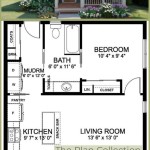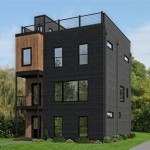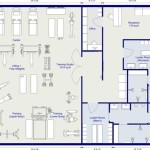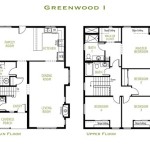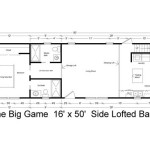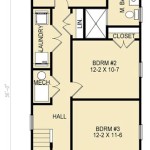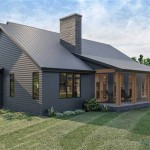600 Square Foot House Plan: Maximizing Space and Efficiency
Designing a home around a 600 square foot footprint presents a unique set of challenges and opportunities. It requires a strategic approach that prioritizes functionality, efficient space utilization, and a thoughtful consideration of lifestyle needs. This article will explore the key considerations involved in creating a successful 600 square foot house plan, focusing on practical design elements and strategies for maximizing living space.
The appeal of smaller homes is multifaceted. They offer affordability in terms of construction costs, lower utility bills, and reduced maintenance demands. Furthermore, a smaller footprint promotes a simplified lifestyle, encouraging mindful consumption and a focus on experiences rather than material possessions. In densely populated urban areas, a 600 square foot home may be the most viable option for homeownership.
However, designing a comfortable and functional living space within such a constrained area necessitates careful planning and execution. One must be acutely aware of the spatial relationships between different areas of the home, and employ design techniques that create a sense of openness and flow. The prioritization of essential features and the strategic integration of multi-functional elements are crucial.
Optimizing the Floor Plan Layout
The floor plan is the foundational element of any home, and its importance is amplified in a 600 square foot design. Efficient layout planning is paramount to creating a livable and functional space. The initial step involves carefully assessing the needs and priorities of the occupants. This includes considering the number of residents, lifestyle preferences, and individual space requirements.
Open-concept designs are frequently favored in smaller homes because they eliminate walls that would otherwise divide the living area, creating a continuous and more expansive feeling. This involves integrating the living room, dining area, and kitchen into a single, unified space. Careful zoning within this open area is essential for defining distinct activity zones without the constraints of physical barriers. This can be achieved through variations in flooring, furniture placement, or subtle changes in ceiling height.
The placement of the bathroom is another critical consideration. Ideally, it should be located near the sleeping area for convenience and privacy. A compact bathroom design with a shower instead of a bathtub can significantly save space. Wall-mounted toilets and sinks can also contribute to creating a more open and airy feel. Pocket doors, which slide into the wall, are often used in small bathrooms to avoid the swing of a traditional door, further maximizing usable floor space.
The bedroom design presents its own set of challenges. In some cases, a loft bedroom might be considered. This utilizes vertical space, freeing up valuable floor area below for other functions. Alternatively, a Murphy bed, which folds into the wall when not in use, can transform the bedroom into a multi-purpose space during the day. Strategic placement of windows and mirrors can maximize natural light and create the illusion of more space.
Circulation paths within the 600 square foot home must be carefully planned to avoid creating bottlenecks or congested areas. Minimizing hallway space and optimizing flow between rooms is essential for ensuring ease of movement and preventing a cramped feeling. Diagonal views and strategically placed focal points can also help to draw the eye and create a sense of depth.
Maximizing Vertical Space and Storage
In a small home, every inch counts. Utilizing vertical space is a key strategy for expanding storage and functionality without increasing the footprint. This involves thinking beyond traditional furniture and exploring creative storage solutions that take advantage of wall height and ceiling space.
Built-in shelving units are an excellent way to maximize vertical storage. They can be customized to fit specific needs and integrate seamlessly with the architectural design. Wall-mounted cabinets in the kitchen can extend to the ceiling, providing ample storage for cookware, dishes, and pantry items. In the living area, bookshelves that reach the ceiling can create a dramatic visual impact while providing storage for books, decorative items, and other belongings.
Loft spaces, as previously mentioned, are another effective way to utilize vertical space. A loft bedroom can free up significant floor area below for a living room, kitchen, or home office. Loft spaces can also be used for storage, creating a hidden area for seasonal items or other infrequently used belongings. Access to the loft can be achieved through a compact staircase, a ladder, or a spiral staircase, depending on the available space and aesthetic preferences.
Under-stair storage is often overlooked but can provide valuable space for storing cleaning supplies, luggage, or other bulky items. Utilizing the space under the bed with storage drawers or containers is another practical way to maximize storage. Furniture with built-in storage, such as ottomans with hidden compartments or coffee tables with drawers, can also contribute to efficient space utilization.
Vertical gardens can also enhance the ambiance of a small home while making use of vertical space. They can be installed on walls or balconies, bringing a touch of nature indoors and improving air quality. Furthermore, strategically placed mirrors can create the illusion of more space and light, making a small room feel larger and more open.
Selecting Materials and Finishes
The choice of materials and finishes plays a crucial role in creating a comfortable and aesthetically pleasing environment, particularly in a small home. Light and neutral colors are generally preferred because they reflect light and create a sense of spaciousness. Dark colors can make a room feel smaller and more enclosed.
The selection of flooring materials also impacts the perception of space. Light-colored hardwood floors or large-format tiles can create a seamless and expansive feel. Avoiding overly busy patterns or rugs that break up the floor space can further enhance the sense of continuity. Consistent flooring throughout the main living areas can help to unify the space and create a more cohesive look.
Minimalist design principles are often employed in small homes to avoid clutter and create a sense of calm. This involves selecting furniture with clean lines and simple shapes, and avoiding excessive ornamentation. Multi-functional furniture, such as a sofa that converts into a bed or a table that can be extended, is particularly valuable in a small space.
Strategic use of lighting is essential for creating a comfortable and inviting atmosphere. Natural light should be maximized through the use of large windows and skylights. Artificial lighting should be layered to provide ambient, task, and accent lighting. Recessed lighting can save space and provide a clean, modern look. Dimmer switches allow for adjusting the lighting levels to suit different activities and moods.
The selection of hardware, such as doorknobs, cabinet pulls, and light fixtures, should be carefully considered to ensure that they complement the overall design aesthetic and contribute to a sense of sophistication. High-quality materials and finishes can elevate the overall design and create a more luxurious feel, even in a small space.
In summary, designing a successful 600 square foot house plan requires a holistic approach that considers the layout, storage, materials, and finishes. By prioritizing functionality, maximizing space utilization, and employing creative design solutions, it is possible to create a comfortable, stylish, and livable home within a small footprint.

20 New 600 Sq Ft House Plans 2 Bedroom Image

600 Sqft House Plans 2 Bedroom 10x60 Houseplans 20x30 30x20

Cottage Plan 600 Square Feet 1 Bedroom Bathroom 348 00166

Tiny Home Plan Under 600 Square Feet 560019tcd Architectural Designs House Plans

600 Sq Ft House Plan Mohankumar Construction Best Company

600 Sq Ft Duplex House Plans

600 Square Foot Tiny House Plan 69688am Architectural Designs Plans

600 Sqft House Plan

2 Bhk House Plan In 600 Sq Ft Gharka Naksha Rjm Civil

600 Sq Ft House Plans Designed By Residential Architects

